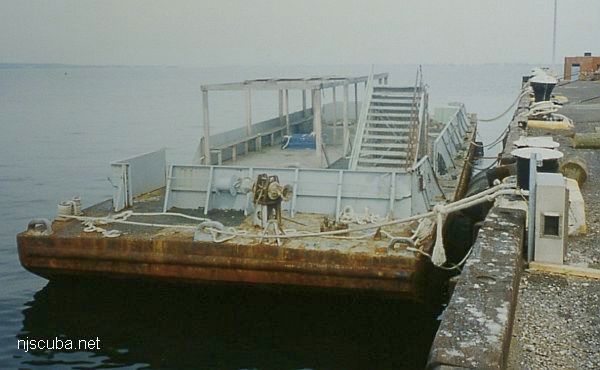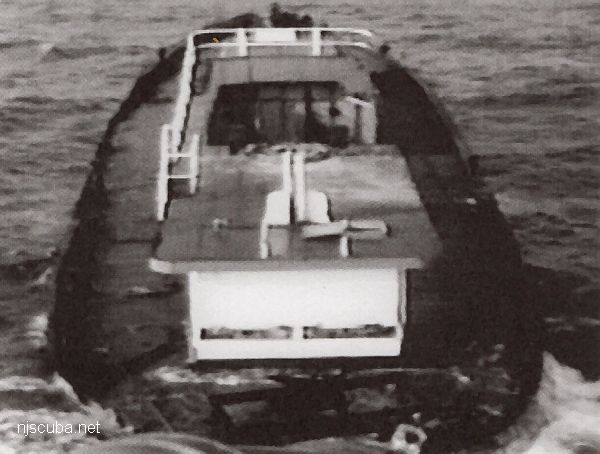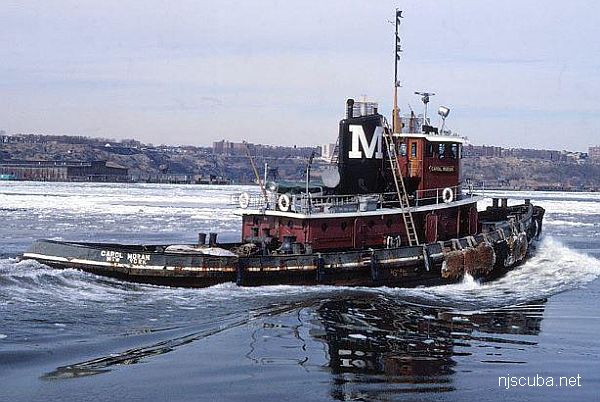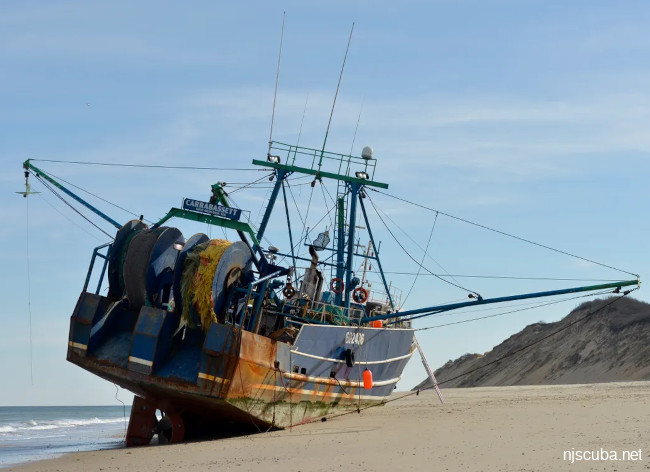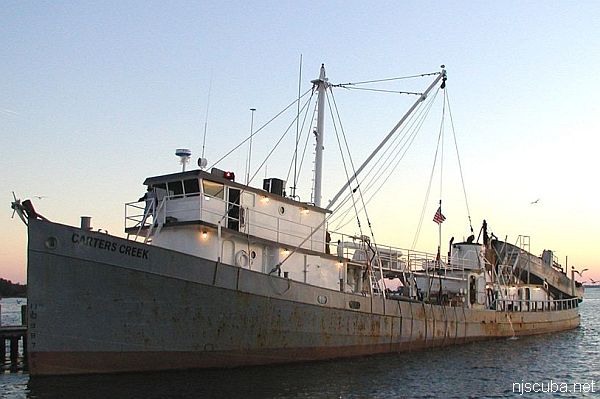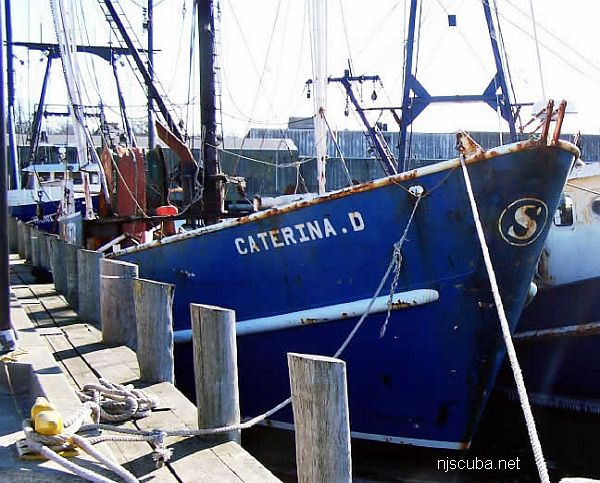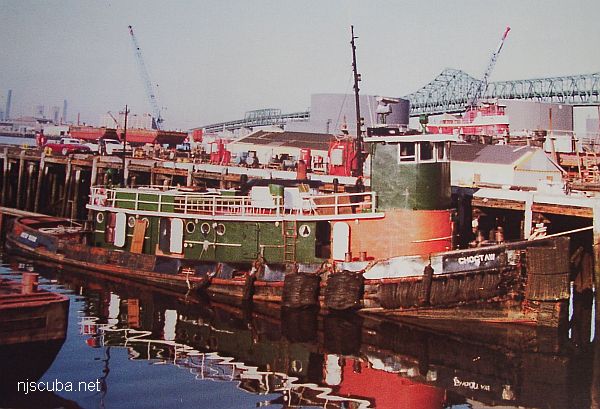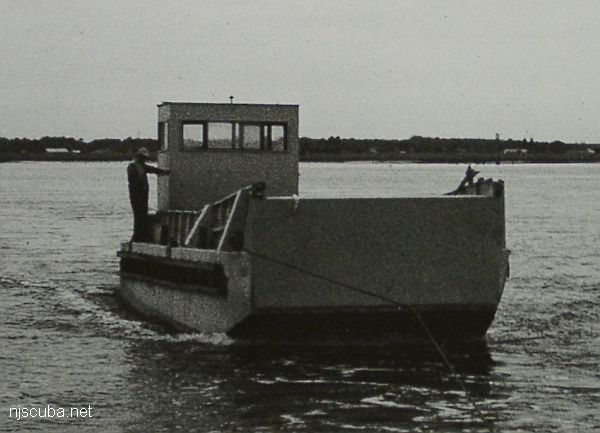 "Captain Henry" - the bow ramp appears to have been welded up
"Captain Henry" - the bow ramp appears to have been welded up
- Type:
- artificial reef, LCM-6 (Landing Craft-Mechanized) used as buoy tender
- Built:
- 1943 New Orleans LA USA
- Specs:
- ( 56 x 14 ft ) 64 tons
- Sponsor:
- Bureau of Coastal Engineering, Fish America &
Cape May County Party & Charter Boat Association
- Sunk:
- Sunday May 6, 1990 - Cape May Artificial Reef
- GPS:
- 38°51.200' -74°42.280'
More: Captain Henry LCM-6 ...
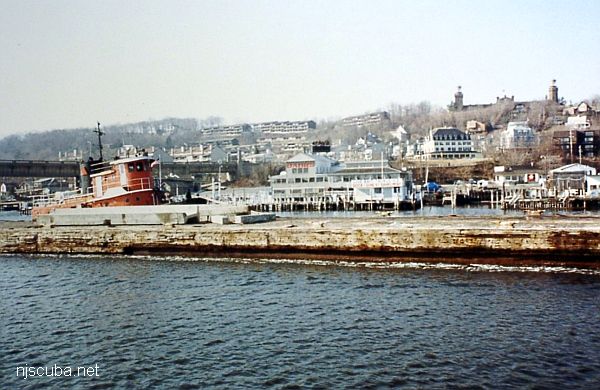 The Car Float barge is pushed up the Navesink River below Twin Lights. The tugboat is the Billy D, later sunk on the Shark River Reef.
The Car Float barge is pushed up the Navesink River below Twin Lights. The tugboat is the Billy D, later sunk on the Shark River Reef.
- Type:
- artificial reef, barge
- Specs:
- ( 270 x 39 ft )
- Sponsor:
- East Coast Tender Services
- Sunk:
- Wednesday February 10, 1988 - Sea Girt Artificial Reef
- GPS:
- 40°07.135' -73°56.919'
More: car float barge ...
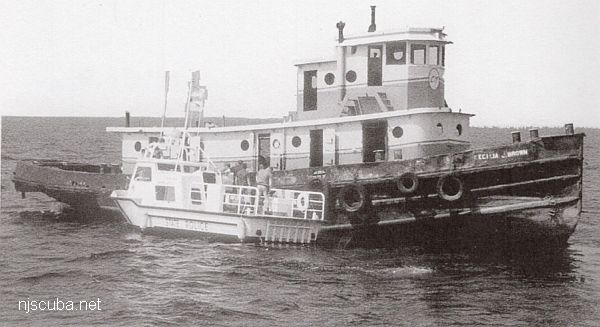
- Type:
- artificial reef, tugboat, USA
- Built:
- 1944, Decatur Iron & Steel, Decatur AL USA
- Specs:
- ( 86 x 24 ft )
- Sponsor:
- Cape May County Party & Charter Boat Association, Artificial Reef Association, Sportfish Fund
- Sunk:
- Monday August 16, 1993 - Cape May Artificial Reef
- GPS:
- 38°52.950' -74°40.200'
- Depth:
- 60 ft
More: Cecilia J Brown DPC-42 ...
